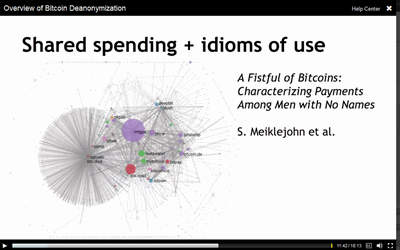The previous post,
Bitcoin in the News : 2016-04, included an obvious follow-up.
The most repeated stories involved a couple of products. The first product was something called 'lightning'. [...] Since neither story explained what 'lightning' is, I'll pursue that in a future post.
The obvious search parameters lead to the product's home page (the term 'service' would be more accurate):
Lightning Network,
'Scalable, Instant Bitcoin/Blockchain Transactions', explained with a 55 minute video. The site's 'How it Works' page explains,
The Lightning Network is dependent upon the underlying technology of the blockchain. By using real Bitcoin/blockchain transactions and using its native smart-contract scripting language, it is possible to create a secure network of participants which are able to transact at high volume and high speed.
Let's go back a year, to
Could the Bitcoin Lightning Network Solve Blockchain Scalability?
(coindesk.com; March 2015):-
The blockchain's increasing size continues to raise concerns about its ability to accommodate transaction growth. But, could a decentralised system where transactions are sent over a network of off-blockchain micropayment channels solve the ledger's scalability problems? Joseph Poon and Thaddeus Dryja, the developers behind the Bitcoin Lightning Network, think so.
That article points to a (much-referenced) white paper, the lightning-network
paper-DRAFT-0.5.pdf:-
Abstract:
•
The bitcoin protocol can encompass the global financial transaction volume
in all electronic payment systems today, without a single custodial 3rd party holding
funds or requiring participants to have any more than a computer on a home broadband
connection. A decentralized system is proposed whereby transactions are sent over a
network of micropayment channels (a.k.a. payment channels or transaction channels)
whose transfer of value occurs off-blockchain. If Bitcoin transactions can be signed with
a new sighash type which addresses malleability, these transfers may occur between
untrusted parties along the transfer route by contracts which are enforceable via broadcast
over the bitcoin blockchain in the event of uncooperative or hostile participants, through
a series of decrementing timelocks.
Malleability?
simple.wikipedia.org:
•
Malleability is the ability of a metal to be hammered into thin sheets. Gold and silver are highly malleable. When a piece of hot iron is hammered it takes the shape of a sheet. The property is not seen in non-metals.
Bitcoin malleability? From bitcoin.org/en/glossary,
Transaction Malleability, Mutability:-
The ability of someone to change (mutate) unconfirmed transactions without making them invalid, which changes the transaction’s txid, making child transactions invalid.
I think I get it. Imagine the blockchain getting hammered. It turns out this happened last year;
The Who, What, Why and How of the Ongoing Transaction Malleability Attack
(bitcoinmagazine.com; October 2015):-
For the past several days, the Bitcoin network has been plagued by a so-called “transaction malleability attack.” Bitcoin users have experienced a number of annoyances, causing confusion and frustration. And while the transaction malleability issue is well-known and has plagued the Bitcoin network before, to many it is still unclear what it is, why it is a problem, who is causing the attack right now, and what can be done about it.
That's good to know, but I'm getting off track. Malleability might be an issue, but there are more fundamental concerns. From
Debunking the 11 Most Stubborn Lightning Network Myths
(bitcoinmagazine.com; October 2015, a week after the previous link -- a coincidence?):-
Earlier this year, [Poon & Dryja] released the Lightning Network white paper. In it they theorize how a layer on top of the Bitcoin blockchain can allow for instant and cheap bitcoin transactions, while vastly improving its scalability.
As a result of the block-size limit debate, the Lightning Network has been getting a lot of attention lately. But, unfortunately, wild myths have started to dominate the discourse. Suddenly thrown in the middle of a long-lasting conflict of visions, Poon and Dryja's concept is hailed both as the great savior solving all of Bitcoin's problems – and as a source of deep corruption within Bitcoin's development community.
[...]
• Myth #1: Core developers are crippling Bitcoin to force users onto the Lightning Network.
• Myth #2: There is no conflict of interest for the Core developers employed by Blockstream.
[...]
• Myth #11: The Lightning Network is urgently needed.
That's enough for now. I might not know how Lightning works in detail, but I know enough to understand that it's controversial. I'll let the controversies play out and come back to the subject if its evolution merits a deeper look.
